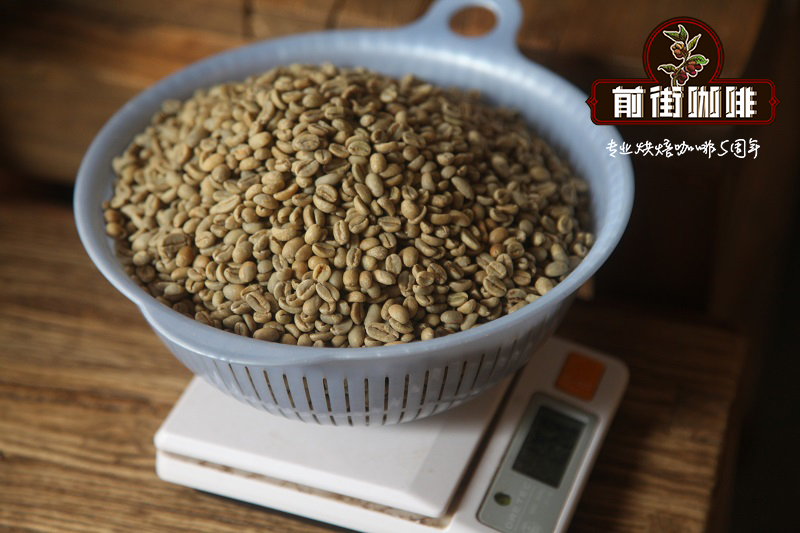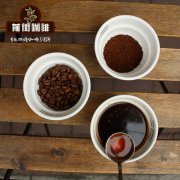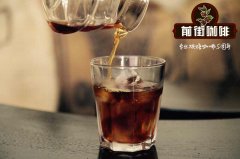The cultivation of low-yield Ecuadorian organic coffee beans? And Guadore coffee beans have a special flavor.

Professional coffee knowledge exchange more coffee bean information please follow the coffee workshop (Wechat official account cafe_style)
The cultivation of low-yield Ecuadorian organic coffee beans? What are the flavor characteristics of Guadore coffee beans?
Ecuador Ecuador is an island country in South America and has a long history of growing coffee. In the early 19th century, Ecuador coffee has never been listed as a major economic source compared to bananas, oil and shrimp, but the mountains on the island have enough height, microclimate change and good quality ideal soil, a location to produce great coffee! To this end, various organic associations have entered Ecuador to provide professional and technical education, assist in the construction of new mid-stage treatment equipment, and adhere to high standards of organic production, which is an "attractive" good bean among coffee fans in Taiwan.
Ecuador, which passes through the equator between Colombia and Peru, is one of the few countries in South America that produces both Arabica and robusta coffee. In fact, Ecuador means "equator" in Spanish. Due to the use of old-fashioned traditional harvesting and handling methods, Ecuadorian coffee is not included in the list of boutique coffee, so it is generally rare and unfamiliar. Ecuador faces the Pacific Ocean, and near the equator, about 900km west of longitude 90 degrees, Ecuador is also dependent on the Galapagos Island Islands, also known as Cologne, which produces the well-known Galapagos coffee. In order to protect the natural ecology, the Ecuadorian government has designated the archipelago as a national park and banned the use of chemical fertilizers, pesticides and other chemicals, so coffee in the Galapagos Islands is recognized as organic coffee. Galapagos Islands coffee flavor is more balanced and neutral, moderately mellow, with a little obvious but pleasant acidity, with a special aroma. However, because it is rarely seen on the market, not many people talk about this coffee.
Ecuador, which passes through the equator, is one of the few countries in South America that produce both Arabica and robusta coffee. Theo Manor grows coffee on a high mountain at an altitude of 2100 meters. The excellent growing environment makes one of the two native varieties of ancient coffee beans. When sipped, Ironpika has strong and solid dark berries, blackberries, blackcurrants, grapes, fresh citrus flavors, sweet cranberries, plums, cherry aromas, bright acidity, juicy, solid and layered flavors.
Ecuador Coffee covers an area of 305.000 hectares, of which Arabigo coffee accounts for 68% and Robusta coffee accounts for 32%. Coffee, cocoa and banana are the three traditional crops of Ecuador, which are not only the source of farmers' income, foreign exchange for the country, but also important crops to provide employment and social stability. Due to the collapse of international coffee prices around 2000, coffee cultivation in Eritrea has gradually shrunk, and the share of coffee production in the world has also gradually declined. by 2009, Eritrea's coffee production accounted for only 1% of the world's coffee production. However, the export volume of coffee from Eritrea has gradually increased, mainly due to the developed instant coffee processing industry in Eritrea, which, in addition to home-grown coffee, still imports foreign coffee after processing and re-export. The export value of Ecuador coffee has increased year by year since 2002, and the export value of coffee-related products reached more than 100.007 million US dollars in 2010. Eighty-five percent of Ecuador's coffee gardens are run by small farmers, lack of technical guidance, old and unrenewed tree species, so the average yield is very low and the quality is difficult to maintain.
Due to the large number of small farmers and most of them did not join the coffee association, it is difficult to grasp the real output of Ecuador coffee. The total output statistics of the National Coffee Association (COFENAC) often fail to reflect the actual output, and it is also interesting that external sales exceed production. According to the Ecuadorian Export Promotion and Investment Agency, Ecuador exported about 40955 metric tons in 2010, of which 45 per cent by weight were processed coffee (commonly known as industrial coffee, that is, extracted concentrated or instant coffee) and 55 per cent were coffee beans. However, in terms of amount, the export value of industrial coffee accounts for 65%, while coffee beans account for only 35%. This shows the importance of the coffee processing industry to Eritrea's coffee industry. The acreage of Ecuador Coffee Garden is generally small, with about 80% of coffee farmers planting less than 5 hectares, 13% between 5 and 10 hectares, and more than 10 hectares accounting for only 7 percent. According to statistics, 20% of the land in coffee plantations is illegally occupied out of an area of about 300000 hectares in the country. According to the Eritrean Coffee Association, Ecuador's most important coffee producer is in MANABI province.
Flavor: special dry aromas of citrus and dark berries. Sipping is rich and solid dark berries, blackberries, blackcurrants, grapes, fresh citrus flavors, sweet cranberries and plums, cherry aromas, bright acidity, juicy, solid and layered.
Qianjie recommended cooking:
Filter cup: Hario V60
Water temperature: 90 degrees
Degree of grinding: small Fuji 3.5
Cooking methods: the ratio of water to powder is 1:15, 15g powder, the first injection of 25g water, 25 s steaming, the second injection to 120g water cut off, waiting for the powder bed water to half and then water injection, slow water injection until 225g water, extraction time about 2:00
Analysis: using three-stage brewing to clarify the flavor of the front, middle and back of the coffee. Because the V60 has many ribs and the drainage speed is fast, it can prolong the extraction time when the water is cut off.
Important Notice :
前街咖啡 FrontStreet Coffee has moved to new addredd:
FrontStreet Coffee Address: 315,Donghua East Road,GuangZhou
Tel:020 38364473
- Prev

Ecuadorian coffee beans [rumba coffee producing area] what is the flavor of Aklin Farmers' Association coffee? Ecuador
Professional coffee knowledge exchange more coffee bean information please follow the coffee workshop (Wechat official account cafe_style) Ecuadorian coffee beans [rumba coffee producing area] Aklin Farmers' Association coffee flavor? What are the advantages of the Ecuadorian island coffee growing environment? A cooperative organization of high-quality coffee raw bean producers in southern Ecuador bordering the Peruvian border.
- Next

[one of the beautiful coffee beans in the world] how to drink Hawaiian Kona kono coffee? Kona, Hawaii
Professional coffee knowledge exchange more coffee bean information please follow the coffee workshop (Wechat official account cafe_style) [one of the beautiful coffee beans in the world] how to drink Hawaiian Kona kona coffee? What is the unique flavor of Hawaiian Kona coffee? Kona coffee beans, which are grown in the Kona area of Hawaii, are rare and can only be grown on volcanic slopes.
Related
- Detailed explanation of Jadeite planting Land in Panamanian Jadeite Manor introduction to the grading system of Jadeite competitive bidding, Red bid, Green bid and Rose Summer
- Story of Coffee planting in Brenka region of Costa Rica Stonehenge Manor anaerobic heavy honey treatment of flavor mouth
- What's on the barrel of Blue Mountain Coffee beans?
- Can American coffee also pull flowers? How to use hot American style to pull out a good-looking pattern?
- Can you make a cold extract with coffee beans? What is the right proportion for cold-extracted coffee formula?
- Indonesian PWN Gold Mandrine Coffee Origin Features Flavor How to Chong? Mandolin coffee is American.
- A brief introduction to the flavor characteristics of Brazilian yellow bourbon coffee beans
- What is the effect of different water quality on the flavor of cold-extracted coffee? What kind of water is best for brewing coffee?
- Why do you think of Rose Summer whenever you mention Panamanian coffee?
- Introduction to the characteristics of authentic blue mountain coffee bean producing areas? What is the CIB Coffee Authority in Jamaica?

